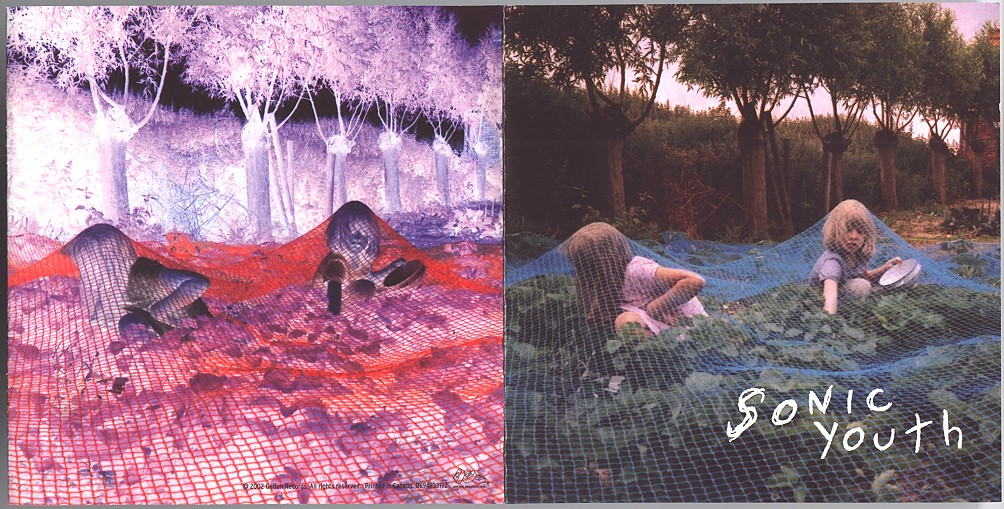
Sonic Youth struck an artful balance between melody and experimentation with the chilled out noise rock of their twelfth album. 'Murray Street' was named for the location of their Echo Canyon studio in New York City. The sessions were interrupted by the World Trade Center attacks of September 11, 2001. Multi-instrumentalist Jim O'Rourke had just become an official member of the band: “The studio was just two short blocks away. A jet engine fell from the sky, and landed on Murray Street within eyeshot of the studio’s front window.”
Drummer Steve Shelley recalls: "The record was pretty much on its way. We had even done some of the basics in August, it’s just that we basically got shut down for two months. We couldn’t get to the studio, and we had to deal with real life at that time. Being in a studio is like the most unreal way to spend your days and your weeks. You’re in this sterile environment and you’re listening to the same thing over and over again. You don’t see the news or your friends and people lives as they change. Every day you’re in this environment where you’re working on creating another false environment, a recording. It’s a really weird process. It’s took us out of that process and dropped us back into it a few months later."
Kim Gordon reflects: "It was strange to go down there to work and be huddled in that studio, and there was nothing, just these empty buildings all around. But it's comforting that when something like that happens, you can still feel good about your work."
Thurston Moore says: "Concurrent with us making this record, they would dig up the street, then they would patch it; then they would dig it up again and they would patch it. They kept changing and rearranging conduits of water and electricity. To me, it was like they were working on their own record."

It was the second album that included O’Rourke; but his involvement was more intensive this time around: "I played bass on two-thirds of the songs and guitar on almost all of them. Actually, Lee was laughing in rehearsal, because I’m often playing bass live, which means he sometimes has to play my guitar parts. It was the first time he has ever had to play parts that weren’t his own. And although I’m credited as the album’s producer, I actually acted more as an engineer. The album’s production was a truly democratic effort by the band."
Lee Ranaldo describes their method for acquiring noises: "Well, basically all sounds heard and felt are fair game to inspire new sounds in whatever form they may take — I love industrial factory smash mechanique, but also birdsong, the wind whipping through tall grasses, and tall trucks slamming across city blacktop streets...It’s just some subtle switch in the brain that trips when an interesting sonic event happens — a bird’s song, jet engine, etc. that spawns sounds in the studio. It’s mostly about being open to hearing things in the world to begin with; I find interesting sounds just about everywhere I turn — then it’s not a matter of imitating but transforming the emotions you feel when you react to such sounds into music."

'Murray Street' was hailed as a return to the melodic sound of their heyday in the 80's. Shelley says: "To us, all of the albums have melody and they have pop songs in them, it’s just that sometimes, they’re done in a different way. People say, 'Oh, you’re writing songs this time.' We consider the material the last couple records in the format of songs and pop music structure, but our definition of what a pop song could be is maybe wider than some people’s. Some people really compare it to DN, which is fine, but we don’t really think about that when we’re making the record. We’re just in the moment and doing what we’re doing."
The album features several extended instrumental sections that deconstruct into an electric cacophony that winds around the interplay of at least three guitarists. Ranaldo says: "We build them like sculptures—from the ground up. Everybody hacks away at it until it’s something. We’ll often just sit around in a room with a tape recorder as a sketching tool and start generating sounds. Ideas gradually expand and develop until we have a structure and a songscape." Moore adds: "It’s not noise improvisation, though it may have originated as such when we first created it. Each of us is playing a distinct musical part that intertwines with the others." O’Rourke considers: "The challenge is keeping it all together, and then, when it falls apart, making sure it’s a good falling apart."
'Murray Street' went to number one hundred and twenty-six in the US, seventy-seven in the UK, sixty-seven in Ireland, sixty-three in Germany, fifty-two in Austria, forty-eight in France, and sixteen in Norway. It was awarded 'Album of the Year' by The Wire.
http://www.sonicyouth.com/
"The Empty Page"
"Disconnection Notice"
"Rain on Tin"
"Karen Revisited"
"Radical Adults Lick Godhead Style"
"Plastic Sun"
"Sympathy for the Strawberry"
"Street Sauce" was an import bonus track.
'Murray Street'
full album:
All music composed by Sonic Youth (Thurston Moore, Kim Gordon, Lee Ranaldo, Steve Shelley, Jim O'Rourke).
1. "The Empty Page" Moore 4:20
2. "Disconnection Notice" Moore 6:24
3. "Rain on Tin" Moore 7:56
4. "Karen Revisited" Ranaldo 11:10
5. "Radical Adults Lick Godhead Style" Moore 4:27
6. "Plastic Sun" Gordon 2:14
7. "Sympathy for the Strawberry" Gordon 9:06

No comments:
Post a Comment